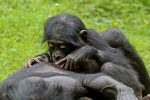In 1868, Karl-Maria Kerbeny has first described the term of the homosexual as a same-sex sexual attraction and sexual behavior in humans. Nowadays, along with the rise of awareness about the rights of sexual orientation, the homosexual term has been widely known in our cultural society. There are a lot of studies and researches about homosexual behavior and other sexual orientation between humans. However, such behavior is also commonly found between animal groups. Same-sex behavior in animals has been observed in thousands of species. Yet, there are still many things that need to observe to fully understand how same-sex behavior happens between nonhumans. Is it possible, though? Here’s the article to give you some insights.
Homosexual and Bisexual Between Animals; Is It Possible to Happen?
Actually, same-sex behavior in animals has been observed for decades, but the findings were usually seen as abnormal behaviors or anomalies between animals. Not until 1999, studies after studies, scientists finally have a better understanding of this behavior.
Same-sex behavior in animals is commonly found across nature in every major region and group; from insects, mammals, and birds. Among animals, homosexual behavior can be found in various forms. Even in the same species, the forms can be different from each other. The forms may include same-sex sexual activity, affection, pair bonding, and parenting as well. Research from Yale University suggests that homosexual behavior may have been part of animal behavior from the beginning.
Here is the list of several animals that are found to have homosexual or bisexual behavior
1. Penguins
Penguins have been observed to have homosexual behavior since 1911. But it was suppressed because it is considered too shocking for public release as the finding is described as ‘depraved’ behavior. In 20 century, there is a lot of reported evidence about same-sex behavior in penguins. In early 2004, for example, a same-sex pair of male chinstrap penguins in the Central Park Zoon, NYC, named Roy and Silo, had successfully incubated, hatched and fostered a chick from a given fertile egg.
The same findings also reported in various zoos from many regions, such as Japan and Germany, about homosexual pairs of penguins that are documented to build nests together, and even use a stone to substitute an egg! One of the earliest findings is a report from New Zealand where two female king penguins named Thelma and Louise have been together for 8 years and they are taking care of an egg that one of them hatched earlier.
2. Bonobos
Bonobo is also one of the most popular species that have been found to have same-sex behavior. Bonobos, both male and female, are engaged in bisexual behavior. However, it is estimated to happen particularly in females, where more than half of all bonobos’ sexual activity happens between two or more females.
The case on bonobo, however, is pretty interesting. Unlike other apes, Bonobos have a matriarchal society. It is found that in general, bonobos’ sexual behavior is not only taking the role in reproduction activity, but also as a form of social bonds. Bonobos also use sex to bond with dominant group members as a way to climb the social ladder and put them in a higher hierarchy. Scientists also believed that their sexual activity is also used to avoid conflict, defuse conflict, and divert attention between them.
3. Bottlenose dolphins
Several species in dolphins are reported to have homosexual behavior, especially the bottlenose dolphin. Scientist has found that particularly, the male dolphins are in a sense bisexual, where the males bond and work together but also reproduce with the females. It is also known that like bonobos, both males and females bottlenose dolphins, can use sex not only as a way to reproduce, but also to form a strong bond relationship among the group members.
4. Giraffes.
Giraffes, especially the male ones, have been found to engage in higher frequencies of homosexual behavior rather than heterosexual behavior. It is estimated that the portion of homosexual activity has varied between 30 percent and up to 70 percent.
5. Bats
More than 20 species of bats in the wild have been observed to engage in homosexual behavior, including the common vampire bat (Desmodus rotundus), the grey-headed flying, and more
6. Domestic sheep
Most of the previous animals switch easily between hetero and homosexual activity, which is why they are best described as bisexual. However, unlike most of the animals that do not show a consistent sexual orientation, domestic sheep are pretty consistent with their same-sex orientation. Domestic sheep, especially the male ones, have shown a lifelong homosexual preference. It is estimated that at least 8 percent of them prefer males rather than females. As we know, domestic sheep have been bred by the farmers to produce females, which might have given rise to homosexual behavior in males.
Another interesting finding of homosexual behavior in domestic male sheep is that their same-sex preference is actually can benefit the females. Scientists suggest that the gene in homosexual domestic male sheep benefit their relatives who may carry the same gene. It makes the female siblings more fertile and makes them able to produce more offspring above the average. However, the findings of the same behavior in the wild sheep are poorly known.
Those animals are only a little part of the list. There are at least more than 1.500 species in animals across the world that have been reported to show same-sex behavior. What we know for sure is that animals are using sex not only to as a way to reproduce but also to fulfill other needs such as social intention. Recalling that only domestic sheep that show persistent homosexual preference throughout their lives, there is only a little or even none of the wild animals that have the same persistent behavior, especially in the way that humans have. Homosexual or bisexual behavior between animals is still on debate. Future findings are needed to let us have a better understanding of them.

